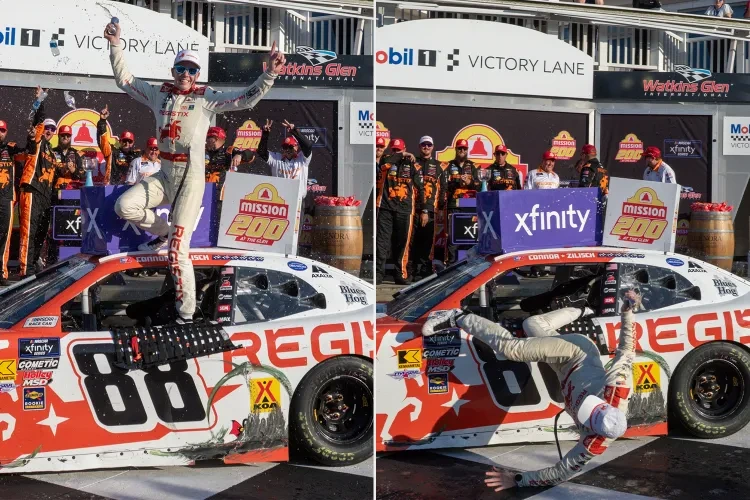Google Ads – All You Need
Google Ads
You’d better spend your money wisely if you’re thinking of using advertisements to reach your target market.
That is, a location that receives more than 2.9 billion unique visitors each month and 5 billion daily interactions.
similar to Google
Just two years after Google.com, the most well-known website in the world, Google Ads was introduced. The advertising platform first appeared in October 2000 under the name Google Adwords, but in 2018 it underwent a rebranding and became known as Google Ads.
Given Google’s wide audience, it’s likely that both you and your potential consumers have seen (and probably clicked on) a Google advertisement.
It’s no secret that these days, the more effective and targeted your paid ads are, the more clicks they produce and the higher the likelihood that they will bring in new clients.
So it should come as no surprise that businesses across all sectors are using Google Ads more and more frequently.
You’ll learn how to start advertising on Google in this guide. We’ll go through platform-specific features and show you how to fine-tune your campaigns for the greatest possible ad outcomes.
What is Google Ads?
Google Ads is a platform for paid advertising that operates under the pay-per-click (PPC) marketing model, in which you, the advertiser, pay per click or impression (CPM) on an ad.
Google Ads are a successful technique to attract qualified visitors, or good-fit clients, to your company who are looking for the goods and services you provide. You may improve in-store traffic, increase phone calls to your business, and increase internet traffic using Google Ads.
With Google Ads, you can make and distribute strategic advertisements to your target market on desktop and mobile devices. As a result, when your target clients use Google Search or Google Maps to look for goods and services similar to yours, your company will appear on the search engine results page (SERP).
By doing this, you can reach your target market at the right time for them to see your advertisement.
Notably, platform advertisements may also appear on YouTube, Blogger, and the Google Display Network.
In order for your company to achieve all of your paid campaign objectives, Google Ads will eventually assist you in analyzing and improving those advertisements to reach more individuals.
You can also modify your advertisements to fit your budget regardless of the size of your company or the resources you have at your disposal. You can keep under your monthly budget with the help of the Google Ads tool, and you may even suspend or discontinue your ad spending at any moment.
Moving on to a more pressing concern, are Google Ads actually effective? Let’s look at some facts to help us respond to this:
▪ The click-through rate for Google Ads is over 2%.
▪ 180 million impressions from display advertising are generated per month.
▪ Paid ads on Google receive 65% of clicks from customers who are ready to buy.
▪ 43% of buyers make a purchase after seeing an advertisement on YouTube.
Why advertise on Google?
With more than 5 billion searches performed each day, Google is the most popular search engine. Furthermore, the Google Ads platform has been in existence for about 20 years, providing it some experience and legitimacy in sponsored advertising.
People all over the world use Google as a resource to ask questions that are then answered by a combination of paid advertisements and organic results.
Do you need one more? Your rivals are utilizing Google Ads (and they might even be bidding on your branded terms).
Because so many businesses use Google Ads to market their brands, even if you’re ranking organically for a certain search keyword, your results will be pushed down the page under those of your rivals.
There is no way around using Google Ads if you’re using PPC to advertise your goods or services (the only exception might be Facebook Ads, but that’s another issue).
Google Ads Best Practices
Don’t give up if you’ve tried advertising on Google but had little luck. Your Google Ads may not be operating as they should for a variety of reasons. However, let’s first go through some common Google Ads recommended practices.
1. Use a PPC planning template.
You can keep your PPC efforts organized by using a planner. You can preview the character counts for your advertisements, see how they will appear online, and manage your campaigns all in one location using Google and HubSpot’s PPC Planning Template.
2. Avoid broad keyword terms.
Your strategy should include testing and fine-tuning because you really need to nail it for your keywords. Your ad will be shown to the wrong audience if your keywords are too general, which will result in fewer hits and a higher ad cost.
Examine what’s working (i.e., which keywords result in clicks) and make changes to your ads as necessary to make them more relevant to your target market. The blend probably won’t be perfect the first time, but you should keep introducing, eliminating, and adjusting keywords until it is.
3. Don’t run irrelevant ads.
You won’t get enough clicks if your ad doesn’t correspond to the searcher’s intent to make your ad spend worthwhile. The keywords you are bidding on must be reflected in your headline and ad copy, and the product you are promoting in your ad must address any problems the searcher may be having.
It’s a combination that will provide the outcomes you want, and it could only require a few adjustments. With the option to generate many ads per campaign, you may test different versions to see which performs best. Use Google’s Responsive Search Ads option instead, or even better.
4. Improve your Quality Score (QS).
Google uses your Quality Score (QS) to decide where to place your ad.
Your rank and positions on the Search Engine Results Page will improve with a higher QS (SERP). Less people will see your advertisement and you will have fewer opportunities to convert if your quality score is low.
Although Google informs you of your Quality Score, it is up to you to raise it.
5. Optimize your ad landing page.
Your efforts shouldn’t end with your advertisement; the user experience that follows a click is just as important.
When a user clicks your advertisement, what do they see? Is the conversion rate on your landing page optimized? Does the page address the problem or query of your user? The conversion process need to be easy for your user to move through.
Google Ads Terms to Know
You can set up, manage, and improve your Google Ads with the aid of these frequent phrases. While some of these are specifically tied to Google Ads, others are more broadly PPC-related. In either case, you must be aware of these to manage an efficient advertising strategy.
1. AdRank
Your ad placement is determined by your AdRank. The higher the value, the better you’ll rank, the more people will see your ad, and the more likely it is that they will click it. Your maximum bid multiplied by your Quality Score yields your AdRank.
2. Bidding
You, the advertiser, choose a maximum bid amount you’re ready to spend for a click on your ad in the Google Ads bidding system. The better your placement, the greater your bid should be. CPC, CPM, or CPE are your three possibilities when placing a bid.
▪ The cost-per-click, or CPC, is what you pay for each time someone clicks on your advertisement.
▪ The price you pay for one thousand ad impressions, or when your advertisement is displayed to a thousand individuals, is known as CPM, or cost per mille.
▪ The sum you spend everytime someone responds to your advertisement is known as the “cost per engagement,” or CPE.
3. Campaign Type
You can choose from seven different campaign types before starting a sponsored campaign on Google Ads: search, display, video, shopping, app, smart, or performance max.
▪ Text advertisements known as “search advertising” are shown alongside search results on a Google results page.
▪ On websites that are part of the Google Display Network, display advertisements—which are often image-based—are displayed.
▪ YouTube features six- to fifteen-second-long video commercials.
▪ The Google shopping tab and search results both display shopping advertisements.
▪ App campaigns optimize ads across websites using data from your app.
▪ Google finds the finest targeting for smart advertising to maximize your return on investment.
▪ With the new campaign type called Performance Max, advertisers may access the entire Google Ads inventory from a single campaign.
4. Click-Through Rate (CTR)
Your CTR is the ratio of the number of clicks you receive to the number of views for your advertisement. A higher CTR implies a high-quality ad that targets pertinent keywords and matches search intent.
5. Conversion Rate (CVR)
Form submissions as a percentage of all landing page views are measured by CVR. Simply put, a high CVR indicates that your landing page offers a seamless user experience that fulfills the promise of the advertisement.
6. Display Network
Google advertising can appear on a webpage within Google’s Display Network or the search results page (GDN). GDN is a network of websites that give Google Adverts space on their web pages. These text- or image-based ads are shown next to material that is pertinent to your target keywords. Google Shopping and app campaigns are the most often used Display Ad choices.
7. Extensions
With the aid of ad extensions, you may add free-of-charge information to your advertisement. Sitelink, Call, Location, Offer, or App are the five categories under which these extensions fall.
8. Keywords
Google displays a number of results that are relevant to the searcher’s purpose when a user submits a query into the search field. Keywords are words or phrases that fit the searcher’s query and provide the results they are looking for. Depending on the searches you want your ad to appear next to, you choose your keywords. When someone searches for “how to wipe gum off shoes,” for instance, they will see results for marketers who have chosen to target terms like “gum on shoes” and “clean shoes.”
Lists of keywords that you don’t want to rank for are known as negative keywords. You will be removed from the bid on these keywords by Google. These are usually vaguely connected to the search terms you were going for but are unrelated to the services you provide or the keywords you want to rank for.
9. PPC
Pay-per-click advertising, also known as PPC, involves the advertiser paying for each click on an advertisement. Although PPC is not exclusive to Google Ads, it is the most typical kind of paid campaign. Before starting your first Google Ads campaign, it’s critical to comprehend all aspects of PPC.
10. Quality Score (QS)
Your Quality Score gauges the effectiveness of your ad based on factors like click-through rate (CTR), keyword relevance, landing page quality, and prior SERP performance. Your AdRank is based in part on QS.
How does Google Ads work?
Potential leads or clients who are looking for your product or service are shown your ad through Google Ads. Depending on the sort of ad campaign chosen, advertisers bid on search phrases, or keywords, and the winners of that bid are displayed at the top of search results pages, on YouTube videos, or on relevant websites.
Your capacity to develop successful and high-performing Google Ads is impacted by a variety of things. They will be discussed here, along with several Google Ads samples.
AdRank and Quality Score
Your advertising’ placement is determined by AdRank, and one of the two factors—the other being bid amount—that affects your AdRank is Quality Score. Keep in mind that your Quality Score is based on the caliber and relevancy of your advertisement, and Google gauges this by the number of people that click on your advertisement when it is displayed, or CTR. Your ad’s ability to successfully match searcher intent will determine how well it performs on click-through rates (CTR):
- How relevant your keywords are
- If the searcher receives what they anticipate from your ad copy and CTA,
- The way people interact with your landing page
Even before you raise your bid amount, you should pay close attention to your QS when you first set up your Google Ad campaign. Your acquisition fees will be reduced and you’ll be placed higher with a higher QS.
Location
You choose the region where your Google Ad will be displayed when you first put it up. If you have a storefront, it should be quite close to where you are physically located. If you run an online store and sell actual goods, you should specify your location to the locations from which you ship. The possibilities are endless if you offer a service or good that is available to everyone in the world.
Your location settings will affect how you are placed. For instance, even if your AdRank is high, if you run a yoga studio in San Francisco, someone searching for “yoga studio” in New York won’t see your result. That’s because Google’s main goal is to show users the best relevant results, even if you’re paying for it.
Keywords
Both paid advertisements and organic search benefit from keyword research. Your keywords should as closely as possibly reflect the objective of the searcher. This is due to Google matching your advertisement with searches based on the keywords you chose.
One to five keywords are ideal for each ad group you designate inside your campaign, and Google will display your ad in accordance with those choices.
Match Types
Match Types provide you some leeway when it comes to choosing your keywords because they inform Google whether you want to match a search query precisely or if you want your ad to be displayed to everyone who enters a semi-related search query. There are four different match types available:
▪ The default setting, known as Broad Match, uses any word within your keyword phrase, in any order. For instance, “goat yoga in Oakland” or “yoga Oakland” will match.
▪ By designating them with a “+” symbol, Modified Broad Match enables you to lock in specific words within a keyword phrase. Your matches will at the very least contain that locked-in term. For instance, searching for “+goats yoga in Oakland” can get results for “goats,” “goats like food,” or “goats with yoga.”
▪ Phrase Match will find matches for queries that contain your keyword phrase in the exact order, even if they contain other words either before or after it. Goat yoga, for instance, can also refer to “spotted goat yoga” or “goat yoga with pups.”
▪ Precise Match keeps your keyword phrase in the exact order that it is written. If someone types “goats’ yoga” or “goat yoga class,” for instance, “goat yoga” won’t appear.
Switch from a broad match to a more specific approach if you’re just getting started and are unsure of how your persona will be searching so you can test which questions get the greatest results. However, because your ad will appear for a variety of queries, some of which are irrelevant, you should monitor your advertising carefully and make any necessary adjustments as you learn more.
You May Also Like:
-

How Big Is the $950 Million Powerball Jackpot?
ByHusay Chords -

-

-
![Eberechi Eze Arsenal Transfer Twist: Tottenham Rivalry, Kai Havertz Factor & Crystal Palace Deal Explained [2025 Guide]](https://askchords.com/wp-content/uploads/2025/08/Untitled-4-768x480.webp)
-

Ashley Biden Files for Divorce: The End of a 13-Year Union
ByHusay Chords -

You May Also Like:
- Suliranin Chords
- Urban Company’s $216M IPO Sells Out in a Flash: A Sign of India’s Roaring IPO Market
- Spotify Launches Lossless Audio on Premium: What That Means for Your Ears
- Tragedy in Evergreen: Details Emerge After Colorado High School Shooting
- DNA Link Breakthrough: Man Charged in Cold Arizona Sexual Assaults Dating Back to 1994
- Charlie Kirk Fatally Shot at Utah Valley University: What We Know So Far
- Inside Taylor Frankie Paul’s Beautifully Blended Family: Meet Her Three Kids and Their Story
- Charlotte on Edge: The Tragic Killing of Ukrainian Refugee Raises Urgent Safety and Justice Debates
- Meet the AirPods Pro 3: Apple’s Most Immersive Audio Yet
- Oracle’s Earth-Shaking Day: How a Massive AI Cloud Backlog Sent Shares Soaring







